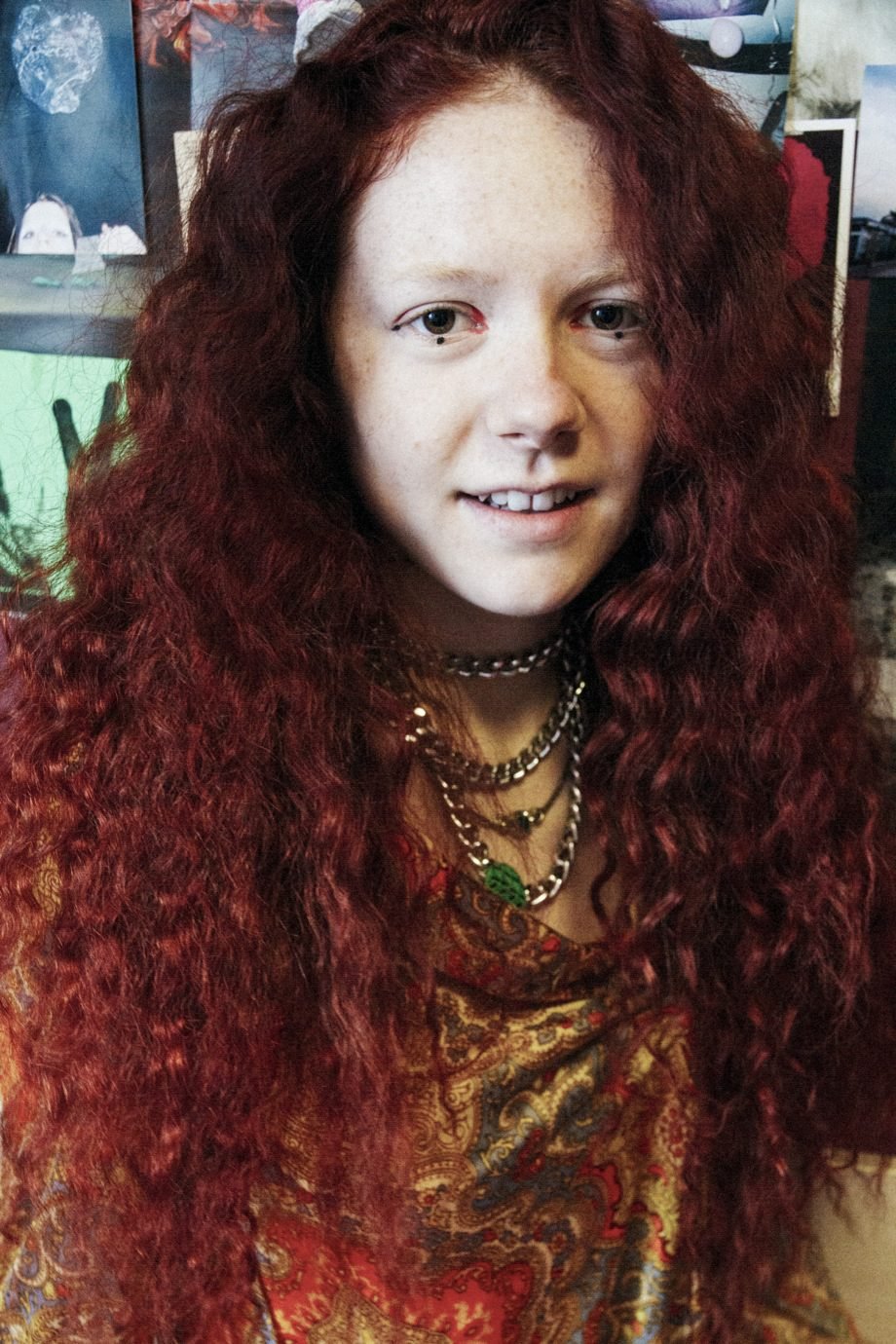This generation has been aware of the labour exploitation, environmental pollution, and overproduction inherent to the functioning of the fashion system for a while now, sometimes even before deciding to become a part of it. They never had the liberty of believing their childhood fantasies.
Obviously, this does not make graduating any less scary, to the contrary. In this climate, it can seem impossible to figure out your entry into the professional world, let alone reflect on your larger purpose in life.
“What is my place in this industry, and how do I find it?”
On the threshold between their academic careers and what is traditionally referred to as “the rest of their lives”, Parsons Generation 9 is using their graduation to simultaneously look back- and forwards through a documentary co-created by 1 Granary ‒ celebrating their personal work while reflecting on their shared future. Faced with the practical limitations of social restrictions, the course decided to shift the focus. Rather than a ceremonial runway show, graduation was celebrated with a deep-dive into the inspiration behind their collections and their reflections on the industry at large.
What rises to the surface throughout these conversations is the question of belonging ‒ what is my place in this industry, and how do I find it? Counter-intuitively, the voices in this documentary suggest we should dive deeper into ourselves before we step out into the world. The students describe emotional explorations before passing to system analysis. Why are these emotions such a crucial first step?
If what E.E. Cummings wrote is true, and a poet is somebody who feels, then these clips and soundbites illustrate the poetry of design. Before there can be expression (whether that’s through words, textiles, or garments) there needs to be emotion. That is because, at least according to the American writer, our emotions are what makes most… well, us.
“What good education forces you to do, is reconnect to who you are.”
“A lot of people think or believe or know they feel — but that’s thinking or believing or knowing; not feeling. And poetry is feeling — not knowing or believing or thinking. Almost anybody can learn to think or believe or know, but not a single human being can be taught to feel. Why? Because whenever you think or you believe or you know, you’re a lot of other people: but the moment you feel, you’re nobody-but-yourself.”
What all the graduates did, and what good education forces you to do, is reconnect to who you are ‒ tap into your own psyche. For some, this meant revisiting their roots, through calligraphy, for example, transcribing the exact moment they communicated with a parent. For others, self-exploration passed through the body, no longer fighting the limitations of their own physicality, but decorating it, making it the centre of their universe. Others still challenged their fears of coming out, confronting their own sexuality.
Who we are is intrinsically linked to our purpose in this world, so before we know why we are here, we need to find out what made us, and this can only be done by feeling.
“As they become known to and accepted by us, our feelings and the honest exploration of them become sanctuaries and spawning grounds for the most radical and daring of ideas,” wrote Audre Lorde. “They become a safe-house for that difference so necessary to change and the conceptualization of any meaningful action… We can train ourselves to respect our feelings and to transpose them into a language so they can be shared. And where that language does not yet exist, it is our poetry which helps to fashion it.”
According to the poet and activist, emotion leads to action. That is why it is not frivolous or self-obsessive to spend those hours upon hours in the studio peering over old family albums or tracing your limbs with a paintbrush.
“As much as we are all looking for these designers to solve our inherited problems – we cannot project, demand or order these young designers to solve it all” – JOFF, Parsons MFA Associate Director
There is value to the work in progress that is shown in this documentary. This is not about the finished product, styled to perfection, and strutting down a blank runway, but about real emotions, the time, and the physical and mental work it takes to produce something.
These graduates may not have been given all the answers, but by confronting themselves they have been taught how to raise questions. A way of thinking. And that is where we might find the turning point of this industry.
As associate director JOFF wrote: “As much as we are all looking for these designers to solve our inherited problems – we cannot project, demand or order these young designers to solve it all; to be sustainable, to be culturally and environmentally aware or be advocates of diversity. All of these things can only see the light of day when rooted in an intrinsic awareness that is initiated by their own real-life experience.”









